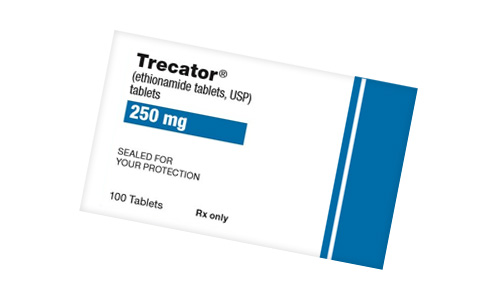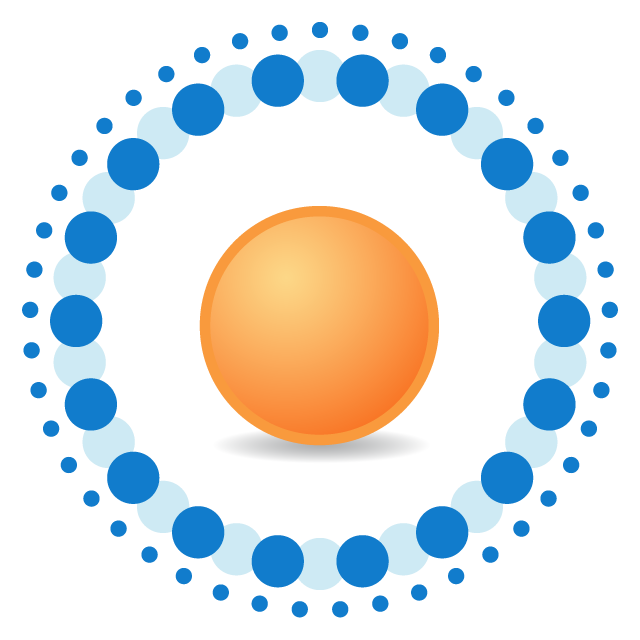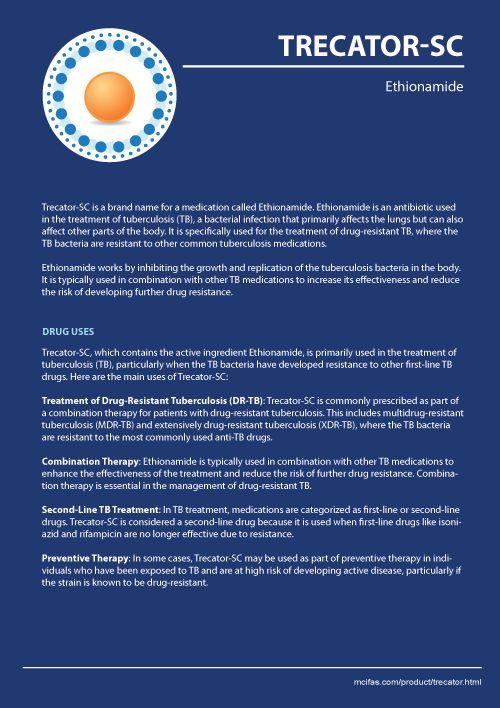Trecator Prescribing Information
Trecator-SC is a brand name for a medication called Ethionamide. Ethionamide is an antibiotic used in the treatment of tuberculosis (TB), a bacterial infection that primarily affects the lungs but can also affect other parts of the body. It is specifically used for the treatment of drug-resistant TB, where the TB bacteria are resistant to other common tuberculosis medications.
Ethionamide works by inhibiting the growth and replication of the tuberculosis bacteria in the body. It is typically used in combination with other TB medications to increase its effectiveness and reduce the risk of developing further drug resistance.

Uses of Trecator-SC
Antibiotic is primarily used in the treatment of tuberculosis (TB), particularly when the TB bacteria have developed resistance to other first-line TB drugs. Here are the main uses of Trecator-SC:
- Treatment of Drug-Resistant Tuberculosis (DR-TB): Trecator-SC is commonly prescribed as part of a combination therapy for patients with drug-resistant tuberculosis. This includes multidrug-resistant tuberculosis (MDR-TB) and extensively drug-resistant tuberculosis (XDR-TB), where the TB bacteria are resistant to the most commonly used anti-TB drugs.
- Combination Therapy: Ethionamide is typically used in combination with other TB medications to enhance the effectiveness of the treatment and reduce the risk of further drug resistance. Combination therapy is essential in the management of drug-resistant TB.
- Second-Line TB Treatment: In TB treatment, medications are categorized as first-line or second-line drugs. Trecator-SC is considered a second-line drug because it is used when first-line drugs like isoniazid and rifampicin are no longer effective due to resistance.
- Preventive Therapy: In some cases, Trecator-SC may be used as part of preventive therapy in individuals who have been exposed to TB and are at high risk of developing active disease, particularly if the strain is known to be drug-resistant.
Dosage
The dosage of Trecator-SC can vary depending on the specific needs of the patient and the recommendations of a healthcare professional. The following information is a general guideline, but individual dosages may differ:
Adults and Adolescents (13 years and older):
- The usual starting dose is 250 to 500 milligrams (mg) taken once daily or in divided doses.
- The maximum daily dose should not exceed 1 gram (1000 mg).
Children (2 to 12 years old):
- The usual starting dose is 10 to 20 mg per kilogram of body weight per day, taken once daily or in divided doses.
- The maximum daily dose should not exceed 1 gram (1000 mg).
Duration of Treatment:
- Treatment for tuberculosis with Trecator-SC is typically given for a prolonged period, often six months or more. The duration of treatment will depend on the specific form of TB being treated and the patient's response to therapy.
Administration:
- Trecator-SC is usually taken orally, with or without food.
- It's important to take the medication exactly as prescribed and not skip doses.
Monitoring:
Patients taking Trecator-SC should undergo regular monitoring, including clinical check-ups and laboratory tests, to assess the effectiveness of the treatment and monitor for potential side effects.
Side Effects of Trecator-SC
Trecator-SC can cause a range of side effects, and it's important to be aware of these potential adverse reactions when taking the medication. Not everyone will experience these side effects, and their severity can vary from person to person. Common side effects may include:
Gastrointestinal Effects:
- Nausea
- Vomiting
- Diarrhea
- Abdominal pain
- Loss of appetite
Neurological Effects:
- Peripheral neuropathy: This is a common side effect and can manifest as tingling, numbness, or pain in the hands or feet. It may be reversible when the medication is discontinued.
- Dizziness
- Confusion
- Headache
- Sleep disturbances
Psychiatric Effects:
- Depression
- Anxiety
- Mood changes
- Psychosis (rare)
Endocrine Effects:
- Hypothyroidism (reduced thyroid function) may occur in some cases.
Hepatic Effects:
- Elevated liver enzymes, which can indicate liver irritation or damage.
Hematological Effects:
- Changes in blood cell counts, including reductions in white blood cells, red blood cells, and platelets.
- Hypoglycemia: Trecator-SC may lower blood sugar levels, leading to symptoms such as weakness, sweating, shakiness, and confusion in some individuals, especially those with diabetes.
Gastrointestinal Effects:
- Metallic taste in the mouth
- Dry mouth
Allergic Reactions: While rare, severe allergic reactions to Trecator-SC can occur, including skin rash, itching, swelling, severe dizziness, and difficulty breathing.
Patients taking Trecator-SC should undergo regular check-ups, including blood tests and neurological assessments, to monitor for potential side effects and ensure that the medication is effectively treating tuberculosis.
Remember that the benefits of treating tuberculosis with Trecator-SC often outweigh the potential side effects, especially in cases of drug-resistant tuberculosis where limited treatment options are available. Your healthcare provider will work with you to manage side effects and optimize your treatment plan.
Interaction with other drugs
Trecator-SC can interact with other drugs, potentially affecting their effectiveness or causing adverse reactions. Here are some important drug interactions:
- Alcohol: Ethionamide can cause liver toxicity, and consuming alcohol while taking the medication may increase this risk. It's generally advised to avoid alcohol during treatment.
- Isoniazid (INH): The combination of Trecator-SC and isoniazid (another anti-tuberculosis drug) can increase the risk of peripheral neuropathy.
- Rifampin: Trecator-SC and rifampin are often used together to treat tuberculosis. However, they can interact with each other in the liver, potentially affecting the metabolism of both drugs.
- Antidiabetic Medications: Trecator-SC may lower blood sugar levels.
- Cycloserine: Combining Trecator-SC with cycloserine (another TB drug) can increase the risk of central nervous system side effects, such as confusion and mood changes. Close monitoring is necessary if you need to take both medications.
- Anticonvulsants: Some anticonvulsant medications (e.g., phenytoin) may reduce the effectiveness of Trecator-SC.
- Pyridoxine (Vitamin B6): Drug can lead to vitamin B6 deficiency.
- Warfarin: Medicine can affect the anticoagulant (blood-thinning) effects of warfarin.
- Proton Pump Inhibitors (PPIs): PPIs like omeprazole can reduce the absorption of Trecator-SC. It's best to take tablets at least one hour before or two hours after a PPI.
What to avoid while on Trecator-SC
When taking Trecator-SC for the treatment of tuberculosis, there are several things to avoid or be cautious about to ensure the medication's effectiveness and reduce the risk of side effects. Here are some important considerations:
- Alcohol: Avoid alcohol while taking Trecator-SC. Ethionamide can cause liver toxicity, and alcohol can further strain the liver. Combining alcohol with tablets may increase the risk of liver damage and other adverse effects.
- Grapefruit and Grapefruit Juice: Grapefruit and its juice can interact with certain medications, including Trecator-SC, potentially altering their absorption and metabolism. It's best to avoid grapefruit and grapefruit juice during treatment.
- Certain Medications: Some medications can interact with Trecator-SC, potentially affecting its effectiveness or causing adverse reactions.
- Food: While tablets can be taken with or without food, taking it with food may help reduce gastrointestinal side effects such as nausea and vomiting. If you experience stomach upset, taking it with a meal may be beneficial.
- Antacids: If you need to take antacids for heartburn or indigestion, it's best to take them at least one hour before or two hours after taking Trecator-SC. Antacids can interfere with the absorption of the medication.
- Driving and Operating Heavy Machinery: Trecator-SC can cause dizziness, confusion, and other neurological side effects. If you experience these side effects, avoid activities that require mental alertness, such as driving or operating heavy machinery, until you are sure how the medication affects you.
- Tobacco and Smoking: Smoking can reduce the effectiveness of Trecator-SC. If you are a smoker, it's advisable to quit or reduce smoking during your TB treatment to enhance the medication's efficacy.
- Other Tuberculosis Medications: Some TB medications may need to be taken separately or at specific times.
Contraindications of Trecator-SC
Trecator-SC has certain contraindications, which are conditions or situations where the use of the medication is not recommended or should be avoided due to potential risks and adverse effects. Contraindications may include:
- Hypersensitivity to Ethionamide: If you have a known allergy or hypersensitivity to ethionamide or any of its components, you should not take Trecator-SC.
- Severe Hepatic Impairment: Trecator-SC can cause liver toxicity. If you have severe liver disease or impaired liver function.
- Severe Central Nervous System (CNS) Disorders: Trecator-SC can cause neurological side effects, including dizziness, confusion, and mood changes. If you have a severe CNS disorder or a history of psychiatric illness.
- Porphyria: Trecator-SC may exacerbate symptoms of porphyria, a rare group of genetic disorders that affect the nervous system and skin.
- Diabetes: If you have diabetes, especially poorly controlled diabetes, Trecator-SC may affect blood sugar levels.
- Children Under 2 Years Old: Trecator-SC is generally not recommended for use in children under 2 years of age due to a lack of sufficient safety and efficacy data in this age group.
Pregnancy and Trecator-SC
The use of Trecator-SC during pregnancy is a complex medical decision. It is generally recommended that the benefits of treating tuberculosis (TB) during pregnancy outweigh the potential risks of leaving the disease untreated. However, the decision to use this drug during pregnancy should be based on a thorough assessment of the individual's health and the specific circumstances.
Here are some key points to consider regarding pregnancy and Trecator-SC:
- Risk vs. Benefit Assessment: You will weigh the potential benefits of treating TB, which can be a severe and life-threatening condition, against the potential risks to both the pregnant person and the fetus.
- Limited Data: There is limited data on the safety of Trecator-SC during pregnancy because conducting clinical trials involving pregnant individuals is ethically challenging. Therefore, the decision to use medicament during pregnancy is often based on available evidence, clinical judgment, and expert recommendations.
- Monitoring: If Trecator-SC is prescribed during pregnancy, close monitoring of both the pregnant individual and the fetus is essential. This includes regular check-ups, laboratory tests, and assessments for potential side effects.
- Folic Acid Supplementation: Antibiotic can lead to a deficiency of folic acid, a crucial nutrient during pregnancy.
- Breastfeeding: Medicine can pass into breast milk. In some cases, the benefits of breastfeeding may outweigh the potential risks of medication exposure.
» Drug Uses (format pdf, 0.2 Mb)



